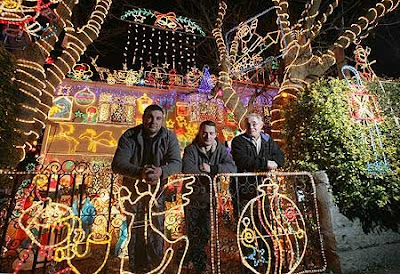Hey, boys and girls, December is right around the corner! Have you cleaned your house from top to bottom, hung the lights, strung the garlands, bought the presents, reserved a roast, and written those all-important Family Christmas Letters?
You haven’t, have you?
Obviously, it’s because you don’t have a convenient way to keep your notepaper and pencil organized! As everyone knows, disorganized stationary leads to a disorganized home, which leads in turn to a disorganized life, and ultimately, the collapse of civilization.
So you’d better start making yourself a Notepaper and Pencil Case right now, or – heaven forbid! – your family will be having microwaved Turkey Dogs for Christmas Dinner because you’ll be frantically decking your halls.
For the complete pattern (and more snark!):
Notepaper and Pencil Case
See how organized this girl is? She’s already made detailed plans for the Secret Santa Exchange, the Christmas Party, and invading Normandy.Materials Required: AMERICAN THREAD COMPANY “STAR” BLEND YARN, Article 75
2 skeins Red.
1 skein White.
Steel crochet hook No. 00.
1 pencil
1 pad 3 inches x 5 inches.
She’s smiling with satisfaction, not repressed rage. But don’t ask her if her belt is too tight, or she might stab you with herBACK SECTION: With Red ch 38, s c in 2nd st from hook, 1 s c in each remaining st of ch, ch 1 to turn all rows.bloodholly red pencil.
2nd Row. 1 s c in each s c. Repeat the last row 26 times, cut yarn.
And while you’re making your Holiday To-Do List, don’t forget your pets!
Pets love having their picture taken with Santa. Even more than the kids!TOP SECTION: Work 1st 10 rows same as back section.
11th Row. 1 s c in each of the 1st 28 s c, turn.
Next 14 Rows. 1 s c in each s c, cut yarn.
With wrong side of 10th row toward you, attach yarn in 1st free st and work 1 s c in each s c.
Next 14 Rows. 1 s c in each s c.
Next Row. 1 s c in each s c, 1 s c in each of the 28 sts of opposite side, turn.
Next 2 Rows. 1 s c in each s c, cut yarn at end of last row.
And don’t let those Goodwill Grinches tell you that your Christmas lists should be focused on making the world a better place. Peace on Earth starts with Peace at Home.
And lots and lots of tinsel.
And that’s just their bathroom tree!PENCIL HOLDER: With Red ch 3, s c in 2nd st from hook, s c in next st of ch, ch 1, turn.
2nd Row. 2 s c in each s c, drop Red, turn.
3rd Row. Attach White, 2 s c in 1st s c, 1 s c in each of the next 2 s c, 2 s c in next s c, ch 1 to turn all rows.
4th Row. 1 s c in each s c, drop White. (When changing colors always complete last half of last st worked with next color.) Working even in s c work 2 rows Red, 2 rows White until there are 6 stripes of each color. Work 2 more rows in Red, cut yarn. Sew to upper section to the left of pad opening, leaving last row free. Cut a piece of cardboard to fit upper section. Place between the 2 sections made and overcast the sections together.
And if there’s a wee bit of “keeping up with the Joneses” involved in your crocheted-list-cozy-enhanced decorating efforts, so much the better!
FLAP: With Red ch 33, s c in 2nd st from hook, 1 s c in each remaining st of ch, ch 1 to turn all rows.
Next 19 Rows. 1 s c in each s c.
Next Row. 1 s c in each of the 1st 31 sts, 3 s c in next st, work 17 s c across the short edge working 3 s c in next corner st, work 31 s c up next long side working on opposite side of starting ch, cut yarn.
With right side of work toward you, attach White in 2nd st of long side, ch 3, 3 d c in same space, drop loop hook, insert in 3rd st of ch, pull loop through, ch 1 to tighten st, * ch 1, skip 1 s c, popcorn st in next s c (popcorn st: 4 d c in same space, drop loop from hook, insert in 1st d c, pull loop through, ch 1 to tighten st), repeat from * 14 times, ch 1, popcorn st in next s c, ch 1 popcorn st in next s c, * ch 1, skip 1 s c, popcorn st in next s c, repeat from * 8 times, ch 1, popcorn st in next s c, ch 1, popcorn st in next s c, * ch 1, skip 1 s c, popcorn st in next s c, repeat from * 14 times, cut yarn.
Next Row. With right side of work toward you, attach White in 1st popcorn st, work a row of s c around the 3 sides working 1 s c in each st and 3 s c in center popcorn st at each corner, cut yarn. Sew plain side of flap to top of under section.
Home Decorating Gone Wild! It’s what Christmas is all about!
Click here for the printable pattern.
Read more!



























































